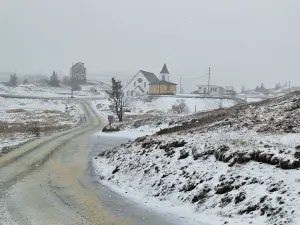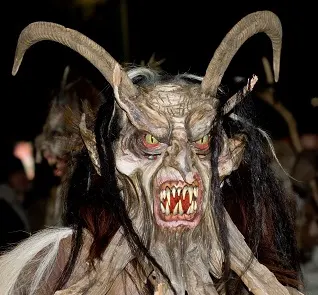
Nine weird winter festivals we'll need this season
Beyond Halloween is another dark and cold winter. Coping can be hard. Here are nine ways people around the world use to keep the winter blues away.
Winter is a hard season, it's true, and each person and each community deals with it in a way that best helps them cope with the season's trials, or celebrate the best it has to offer.
For some, that means outdoor sports, indoor activities, an extra log on the fire place. For others, something a little more off-the-wall is needed.
We had a look around, and we found these nine weird winter rituals.
SAINT NICK'S CHILD-STEALING RIVAL HAS HIS OWN PARADE
For those of you who are bored with the same thing at Christmas every year, meet Krampus, St. Nick’s terrifying counterpart.
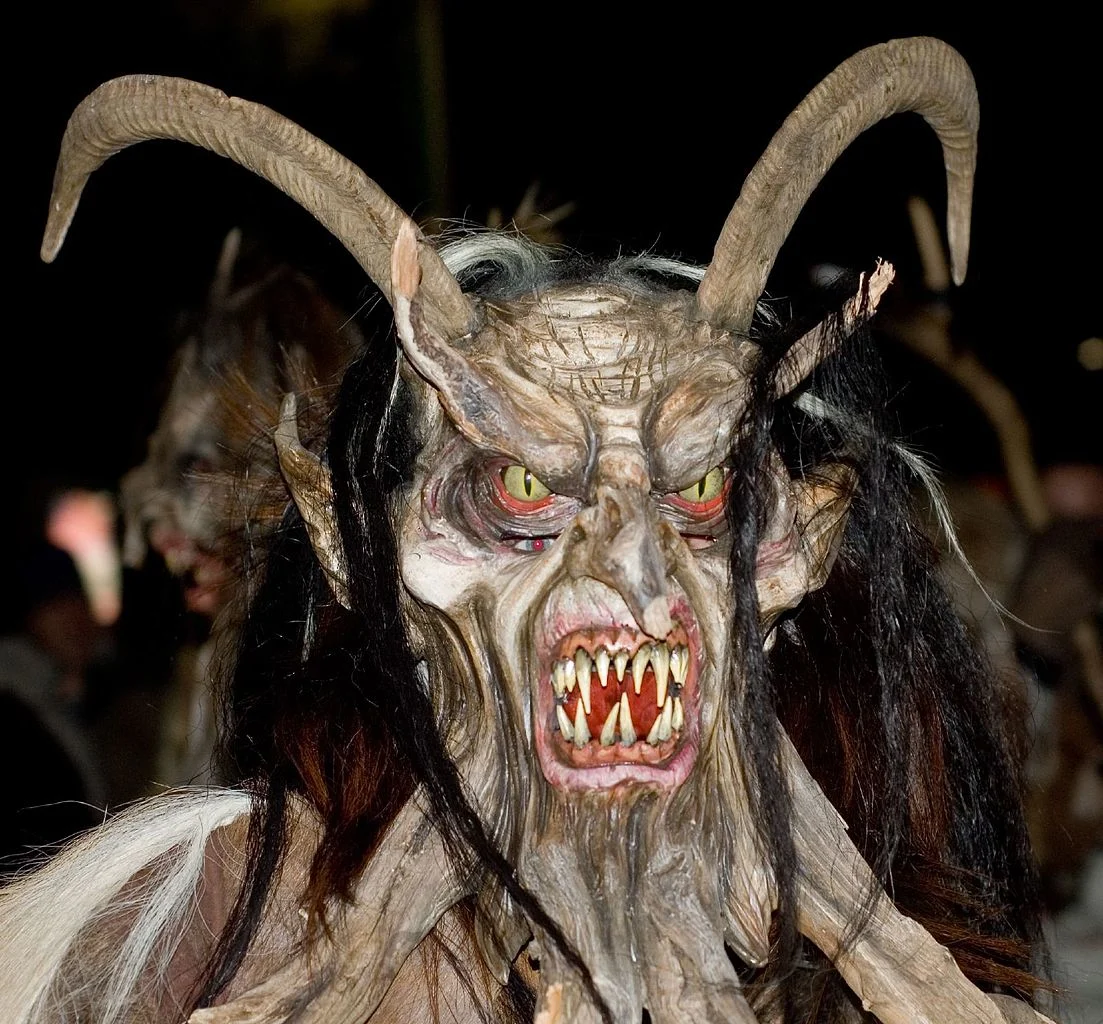
Credit: Anita Martinz/Wikimedia Commons
With his roots in pagan ritual, our boy Krampus spends the holiday season seeking out the boys who’ve been naughty this year and making them pay for their orneriness.
And forget the “lump of coal” punishment. Krampus straight-up loads the young wrongdoers into a bag, and either tosses them into a nearby river, or hauls them off to his lair, where they are presumably eaten.
He’s most popular in Central Europe, where he either has his own parades at the time of the Winter Solstice, known as Krampusnacht, or has a glowering presence beside Santa Claus.
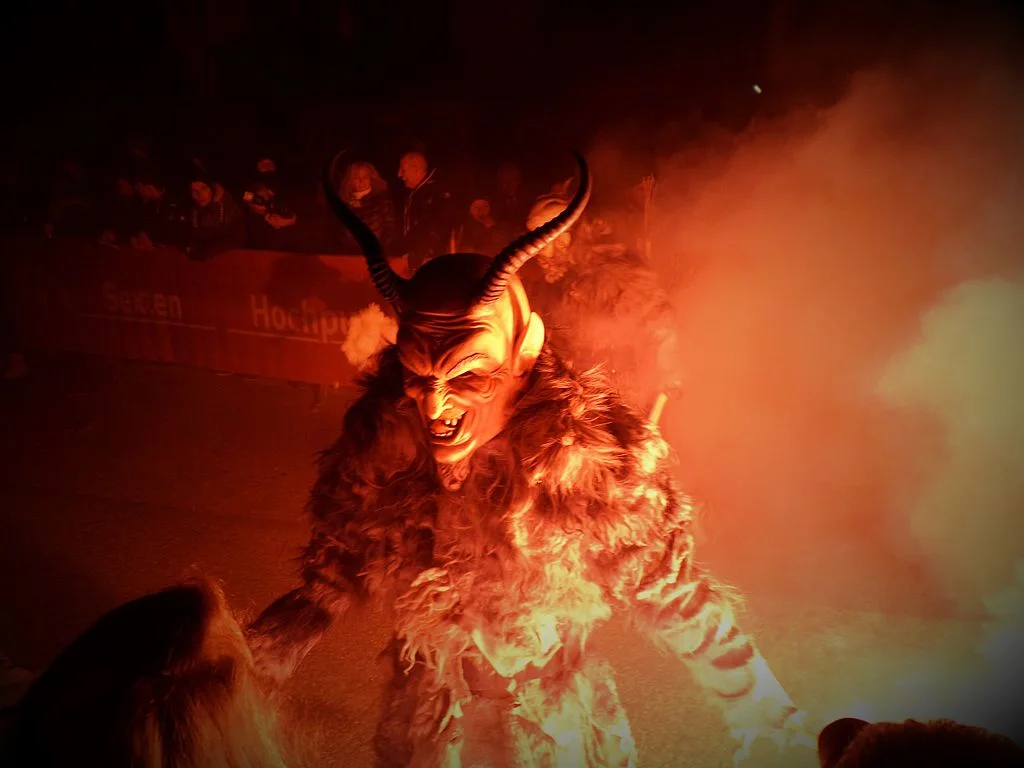
Credit: Llorenzi/Wikimedia Commons
And, in certain Swiss villages, young men actually dress up in the horns and beards and chase down children and rival young men, whacking them with brooms.
Christmas, and all the warm feelings of togetherness and giving, is all very well and good, but, for our money, we reckon the devil-dude is at the very least a bit more interesting.
SHETLAND ISLANDERS WARM THEMSELVES AT THE ANNUAL VIKING LONGSHIP BURNING
Scotland’s Shetland Islands were once ruled by Vikings, so once a year, the islands’ current residents will get together to honour their ancestors’ proud history, particularly the bits that involve sweet hats and setting things on fire.
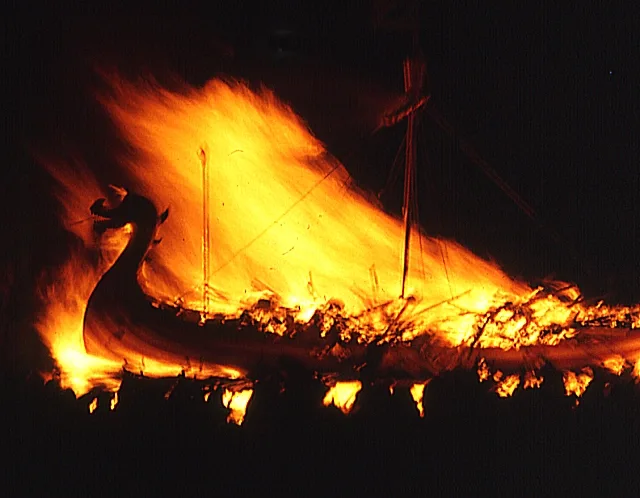
*Burning Galley, Shetland Islands. Credit: Anne Burgess/Wikimedia Commons*
Held in January, regardless of weather, hundreds of inhabitants of the town of Lerwick dress up like actual Vikings, winged hats and all, and proceed in a torchlight procession that usually ends in the burning of a longship built specifically for that purpose (if you’re holding a Viking festival, you have to burn a longship. There’d be no point otherwise).
Afterwards, it’s party time. Groups of mail-clad “guizers” move from hall to hall, singing, dancing, performing, carousing and feasting all through the night.
Up Helly Aa only lasts a day and a night, but the effects linger into the next day – which is a public holiday in the islands, much to the relief of the many aching heads to be found in Shetland that day.
JAPAN'S NAKED MAN FESTIVAL IS ALMOST EXACTLY WHAT IT PORTENDS TO BE
If the picture below doesn’t give it away, Japan’s Hadaka Matsuri translates as “the naked man festival.”
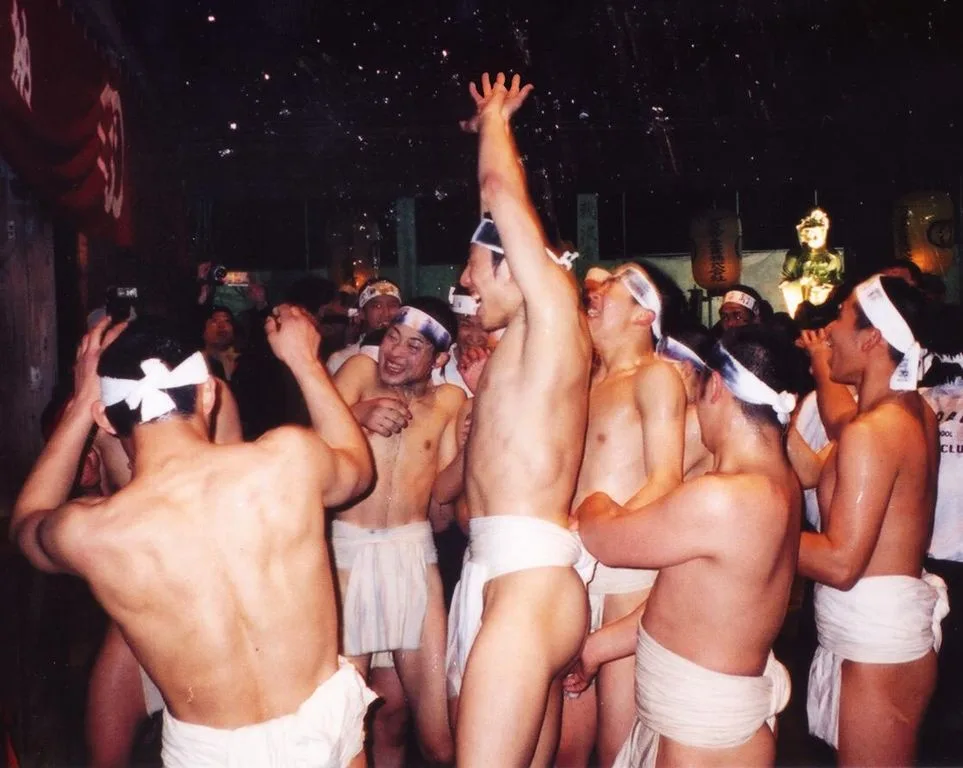
Naked festival" at Saidaiji Temple in Okayama. Credit: CES/Wikimedia Commons
Despite its name, most participants go in at least a loincloth, mercifully (for them, not for us – the event happens in February, and onlookers routinely toss water on them throughout the proceedings).
Around 9,000 people converge on the city of Okayama, strip down to their skivvies, and wait until a priest tosses two wooden sticks about the size of rolling pins down into the throng.
Then all hell breaks loose, as everyone in the pit struggles to grab ahold of, and KEEP ahold of, those sticks. All while dressed, we remind you, in little more than loincloths on a typical Japanese February day.
The whole thing looks like the worst mosh pit of all time, mixed with elements of rugby, until someone manages to get one of these sticks into a special box.
According to tradition, whoever manages this statistically unlikely feat will have what can only be called the most richly-deserved good luck all year long.
FROZEN DEAD GUY DAYS INVOLVES AN ACTUAL FROZEN DEAD GUY
We don’t really have to do too much explaining about what this festival is about – it’s exactly what it says on the tin: A whole celebration around a frozen dead guy.
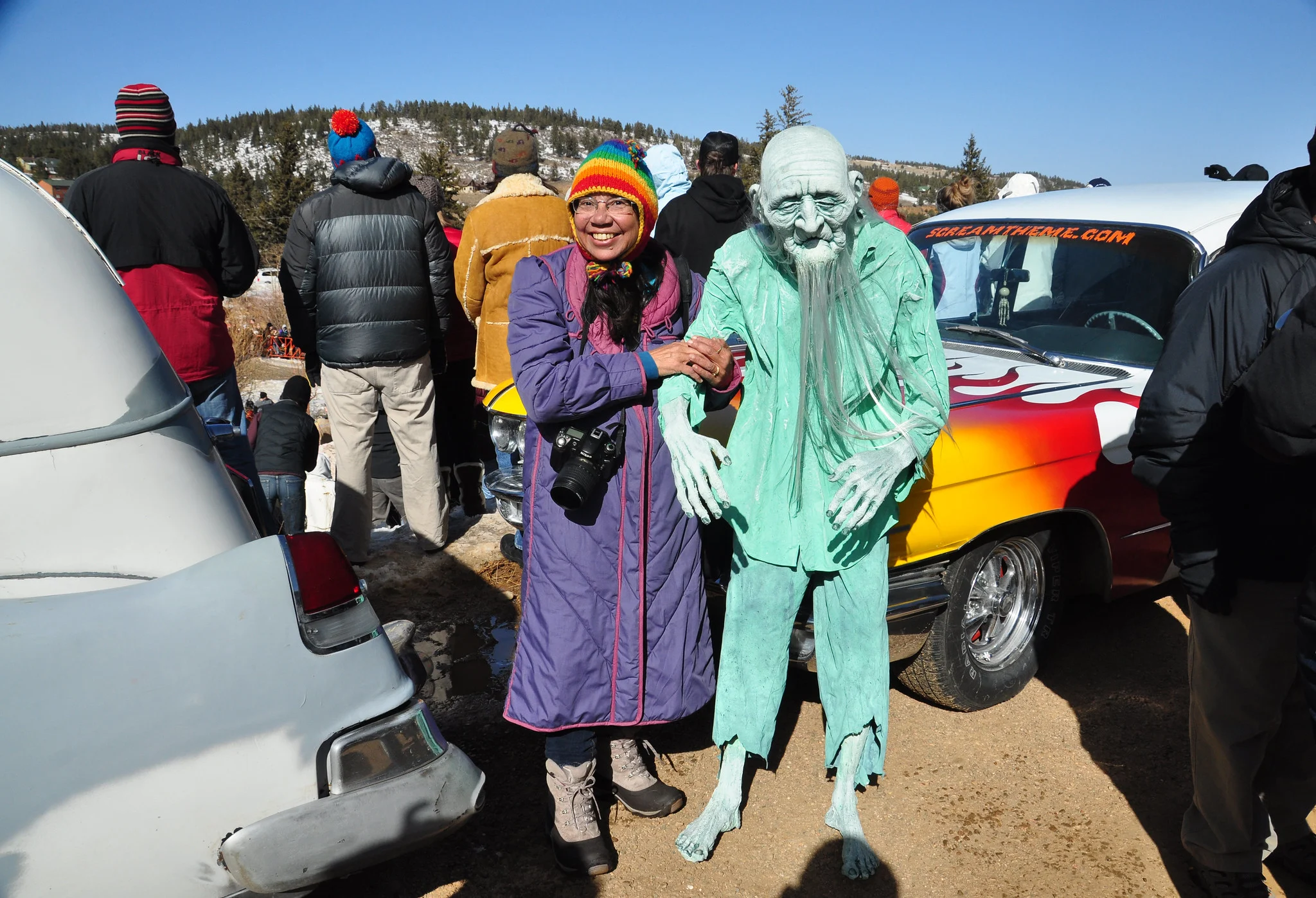
Credit: Kent Kanouse/Flickr
Specifically, the dead guy is Grandpa Bredo Morstoel, an accomplished Norwegian gentleman who, upon his death from a heart condition in 1989, was put on ice and sent to California, for reasons that are way too complicated to explain.
He was passed around from family member to family member before ending up in Nederland, Colorado, where he is now the centre of a massive winter festival in March with the most unambiguously descriptive name ever.
And it’s a real festival. There’s polar bear dips, hearse parades and bone-fide coffin races, where colourfully decked-out pallbearers race each other while toting a coffin (occupied by a live team-member) all about the town.
As for Grandpa Bredo – well, there’s someone in Nederland whose specific job it is to keep his body nice and frosty at -51°C, with hundreds of kilograms of dry ice.
One wonders what the old boy would think of all this.
WATCH BELOW: HERE'S WHAT A 5,300-YEAR-OLD 'ICEMAN' HAD AS A LAST MEAL
A SWISS TOWN CELEBRATES BURNING AN ACCUSED WITCH AT THE STAKE WITH A SKI CONTEST
One fine day in the 1800s, the residents of a small Swiss town accused a woman of murdering her husband using ridiculous evidence, and had her burned at the stake as a witch.
Today, this gross and barbaric act is commemorated with solemnity and respect. By which we mean, people in the Alpine town of Belalp spend a few days in January skiing downhill dressed up like cartoon witches, complete with pointy hats and fake warty noses.
Since the 1980s, the festival of Belalp Hexe has grown and grown, to the point where it’s one of the biggest amateur ski events in the world.
The premise may be silly, but the challenge isn’t. Around 1,500 people brave the slopes on a grueling 12 km tear down the hillside, in what we can only call splendid style.
Afterward, there’s live music and festivities, in case having the opportunity to blaze a few trails dressed up like a Wizard of Oz character wasn’t enough to make the trip worthwhile.
THE AZTECS HONOUR THEIR NATIONAL GOD BY EATING HIM, THEN SACRIFICING A BUNCH OF PEOPLE
Count on the Aztecs to take a perfectly normal December and make it completely terrifying.
The Aztec calendar is actually quite complicated, but the festival of Panquetzaliztli, in honor of the main god Huitzilopochtli, seems to have involved December, and even have included the winter solstice on Dec 21.

Huitzilopochtli, Wikimedia Commons
The Aztecs apparently celebrated the head honcho of their pantheon by holding foot races, raising banners – and baking an effigy of Huitzilopochtli and ceremonially eating it.
Also, human sacrifice, and lots of it. Aztec warfare revolved around taking captives and sacrificing them later. Huitzilopochtli, being the main diety, was really big on the sacrificial part, so when his festival rolled around, there were usually lots of warrior captives on hand.
This source says the captives were even made to dance for their captors before the big show down at the community pyramid.
We’ll file this festival under “thank gods we don’t do this anymore.”
CELEBRATING THE SOLSTICE BY JUMPING OFF A HUNDRED-FOOT POLE
As far as marking the seasons go, Mexico and Guatemala’s Danza dos Voladores is certainly more heart-stopping than a maypole or a Santa Claus parade.
Basically, five men free climb a 30 m pole, and attach ropes around their ankles. Then four of them launch themselves into the air, descending to the ground on the end of the ropes as they unravel – while the last man dances slowly perched at the very top, playing the flute or drums:
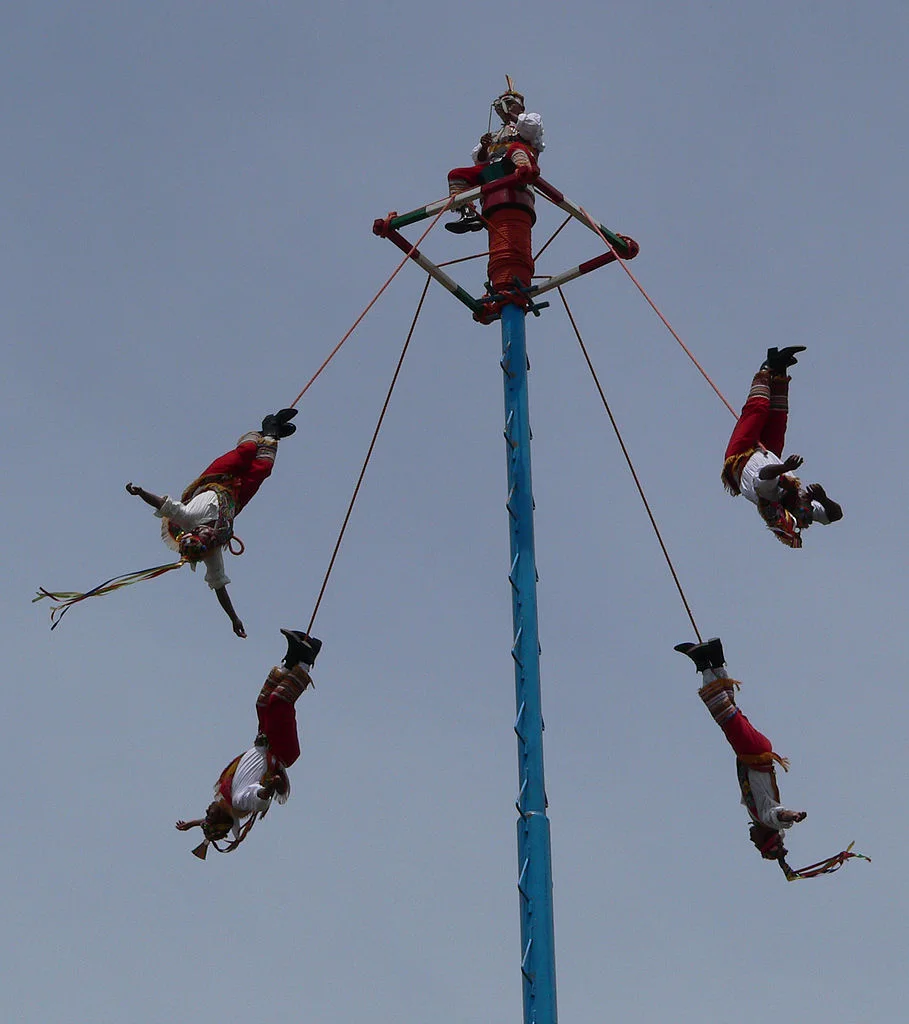
People in Central America came up with the ritual as a means to beg the gods for rain during a severe drought (we’d love to have been a fly on the wall during that planning meeting), but it’s now considered a way to mark the four seasons.
We’re including it on this list because it is traditionally held on December 21, a significant date in the Maya Long Count Calendar.
Appropriately for such an acrobatic feat, people who choose to do it consider it a calling – meaning their one job is to spin around a hundred-foot pole in mid air.
Not a bad job, all things considered, and you can get started early. People as young as 14 and as old as 70 have been known to be Voladores.
PEOPLE IN POLAND ARE REALLY HAPPY TO SEE THE END OF WINTER
When the harshness of winter finally gives way to spring, everyone has their preferred way of welcoming the new season and bidding adieu to the previous season.
In Poland, they prefer to put the old season to bed by burning it in effigy.
More accurately, they burn a doll made in the likeness of Marzanna. She's an old pagan goddess who was in charge of death AND winter, so she was already popularity-challenged.
And on years where the winter has been super-harsh, we’re betting those effigies are burned and/or drowned with quite a bit of gusto.
ROMANS CELEBRATED THE SOLSTICE BY PUTTING THEIR SLAVES IN CHARGE FOR A FEW DAYS
Ancient Roman society was actually pretty conservative, despite what the huge moral excesses of some of the emperors would have you believe.
So it was with great joy that everyone looked forward to the Saturnalia, a week-long festival coinciding with the December solstice where all the social laws were relaxed and people just cut loose.
After the obligatory sacrifice to Saturn and public feast was done, households would appoint a “lord of mis-rule,” who would live up to the name by issuing “decrees” that competed with each other for weirdness, like ordering someone to run around the villa with a flute-playing slave on their back, or demand someone else say awful things about themselves in precise detail. This was on top of the usual merry-making, drinking and public gambling.
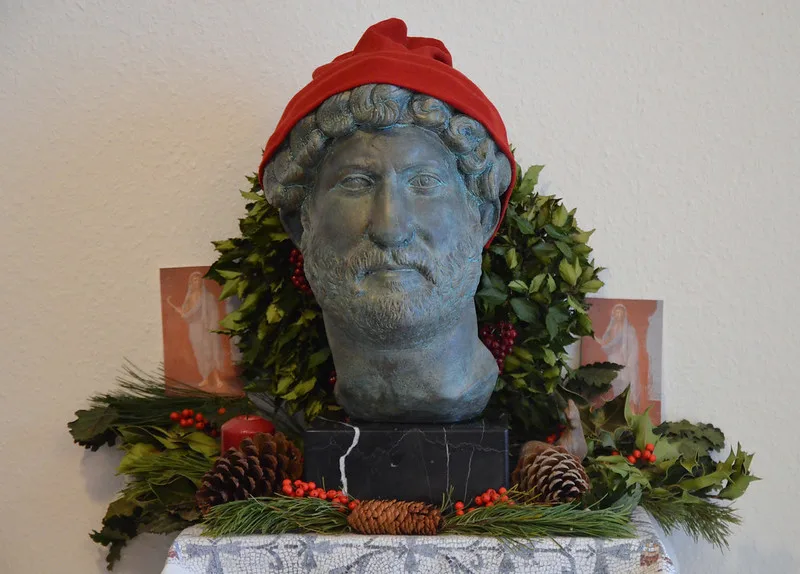
Image: Carole Raddato/Flickr
Slaves made out the best, though. For the duration of the festival, their roles were reversed with their masters. Wearing the master’s clothes, being served dinner first, they had one week to forget they were slaves.
And, because this was Rome, where fighting to the death at the local arena was considered fine entertainment, there was a dark side too. There are records of some of the more remote army camps where they’d celebrate the Saturnalia by choosing a soldier by lot, treating him like royalty and allowing him to do as he pleased for a few days, then executing him when they were done.
Fortunately, modern versions of the holiday are tame affairs completely free of the more blood-thirsty parts of the Saturnalia (like this one in Chester, England).

Saturnalia in Chester, England, Donald Judge/Wikimedia Commons
We prefer the ones on this list that don't involve bloodshed, but at the very least, it goes to show how creative people get when they want to take their mind off the winter.










